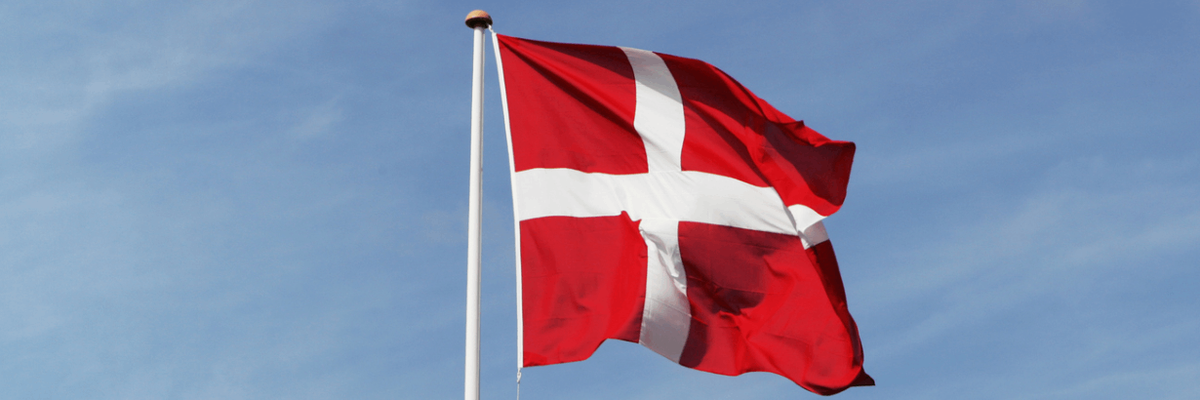Danish post-election study shows where Jakob Ellemann-Jensen’s Blue Bloc leaders lost support, while Mette Frederiksen’s governing party were able to hold on to significantly more of their 2019 voters
On 1 November, Denmark headed to the polls in a snap general election (in Danish: Folketingsvalg), called as a result of collapse in parliamentary support for the Social Democrat-led ruling ‘Red Bloc’ coalition.
Prime minister Mette Frederiksen was seeking a fresh mandate after a damaging parliamentary inquiry reported that her government had illegally culled 17 million minks in November 2020, in a botched response to the ongoing coronavirus pandemic.
Their main rivals for control of the parliament (Folketing) in this year’s contest were the Danish Liberal Party – or Venstre – led by Jakob Ellemann-Jensen. As the leading party in the opposition ‘Blue Bloc’ coalition, Venstre had been in power as recently as 2019, coming a narrow second to Frederiksen’s Social Democrats in the election that year after having been in government since 2015.
Also contesting the election were two brand new parties, both led by well-known Danish politicians: the Moderates (by former prime minister Lars Løkke Rasmussen) and the Danish Democrats (by former Venstre deputy leader and immigration minister Inger Støjberg), and a reported collapse in support for Denmark’s main centre-right party (Venstre) made for a very volatile election and a tricky one to poll.
YouGov’s final call for the election predicted that, despite the challenging context of the election, the Social Democrats would hold onto power – with even a slightly increased share of the vote – and that Mette Frederiksen would remain prime minister.
We also predicted a substantial fall in support for the Venstre party, with Denmark’s two newest parties both placing well, while the far-right Danish People’s party would continue their decline (having reached as high as second place with 21% of the vote in 2015) and barely make the 2% threshold required to enter the Danish parliament.
As it turned out, that was exactly what happened. With the final results now in and verified by Statistics Denmark, the scorecard looks as follows:
| Party | Vote Share (change vs 2019) | YouGov Prediction (error) |
|---|---|---|
Social Democrats (Socialdemokraterne) | 27.5% (+1.7) | 27.6% (+0.1) |
Liberal Party (Venstre) | 13.3% (-10.1) | 12.9 (-0.4) |
Moderates (Moderaterne) | 9.3% (NEW) | 8.0 (-1.3) |
Socialist People’s Party (Socialistisk Folkeparti) | 8.3% (+0.6) | 8.5 (+0.2) |
Danish Democrats (Danmarksdemokraterne) | 8.1% (NEW) | 10.1 (+2.0) |
Liberal Alliance | 7.8% (+5.5) | 6.9 (-0.9) |
Conservative People’s Party (Det Konservative Folkeparti) | 5.5% (-1.1) | 6.5 (+1.0) |
Red-Green Alliance (Enhedslisten) | 5.2% (-1.7) | 6.3 (+1.1) |
For the sake of brevity, we have only listed parties with over 5%.
Overall, our forecast stood up extremely well – particularly as we were the only pollster to correctly estimate the winning margin for the Social Democrats, with the rest of the industry consistently understating their support throughout the campaign. That said, it was a great night for the polling industry overall, with an average ‘mean squared error’ across all 14 parties on the slate of just 0.9 across the five pollsters who covered the election.
With so many changes in parties and party support from the 2019 election to this year, fresh YouGov post-election survey data can shed light onto where, in particular, Venstre voters flocked to, and where support for the two new parties mostly came from. In doing so, we can also highlight the factors which helped the Social Democrats not just maintain but increase their vote share, and return Mette Frederiksen to Denmark’s highest office.
According to our survey of 1,813 Danes, around two thirds (67%) of those who voted for the Social Democrats in 2019 did so again in November’s election. The party also picked up voters from all across the political spectrum between 2019 and 2022. Seven percent of their vote this year came from direct rivals Venstre, while 5% came from each of the far-right Danish Democrats, their coalition partners Radikale Venstre, and the Socialist People’s Party to their left.
There was no specific pattern to the flow of votes away from Frederiksen’s party, with 6% going further left to the Socialist People’s Party, 4% going to each of the Moderates and Danish Democrats, and 3% to the Liberal Alliance. Meanwhile, 8% chose not to vote this time around.
The story was very different for Venstre, with only one third (34%) of their 2019 voters returning to the party again in 2022. One in twelve (8%) went to their centre-left rivals, the Social Democrats. A similar number (11%) went to the far-right Danish Democrats, while 17% of their 2019 supporters opted for the Moderates instead, and 10% went to the Liberal Alliance. A further one in nine (11%) opted to sit out the election.
And what of the new parties in Danish politics, where did their support come from?
Our data suggests that, of those who voted for the Danish Democrats, one third (33%) voted for Venstre in 2019, while 30% voted for far-right rivals the Danish People’s Party. Around one in eight (12%) voted for the Social Democrats, while 8% voted for another right wing party in 2019 – the New Right. Given the party’s policy platform, capturing more than two-thirds of its vote from rival right-wing parties is not surprising.
However, an even greater share of the Moderates’ support came from Venstre – 44%. Another 15% came from Red Bloc coalition partners Radikale Venstre (who instigated the collapse in parliamentary support for Frederiksen and the Social Democrats), while 11% were Social Democrat voters in 2019.
The complex transfers of voters across parties from 2019 to 2022, including the emergence of two new parties, highlights the complexity of the electoral context that parties were competing in – and in which pollsters were trying to accurately measure and predict vote intention.
Photo: Getty










